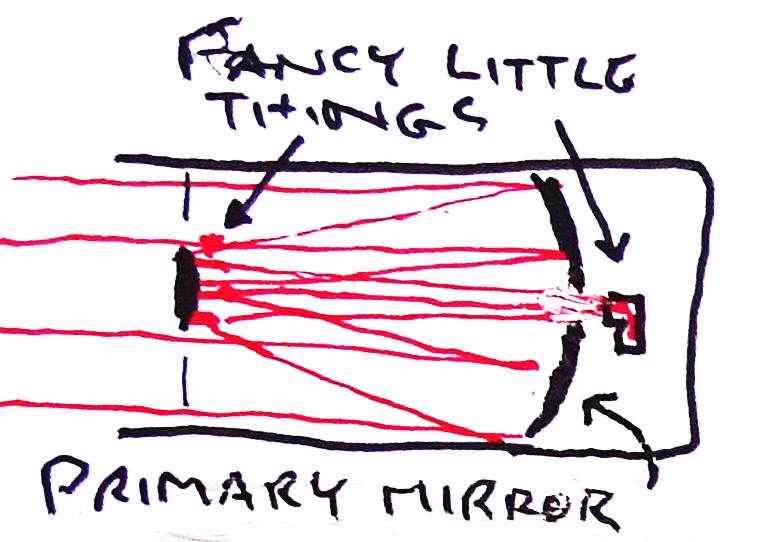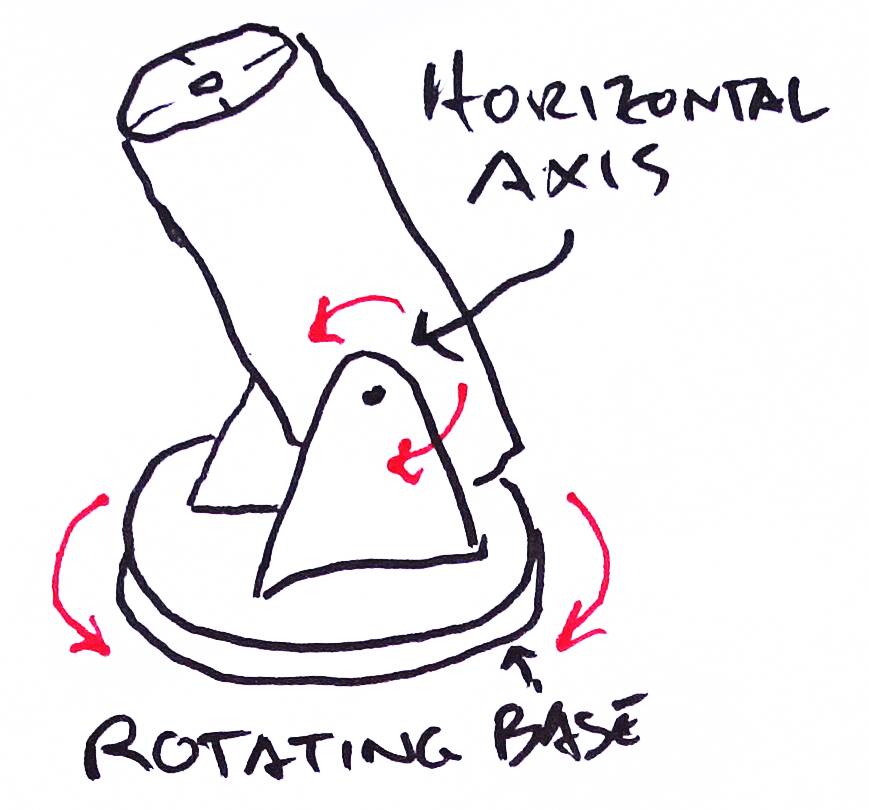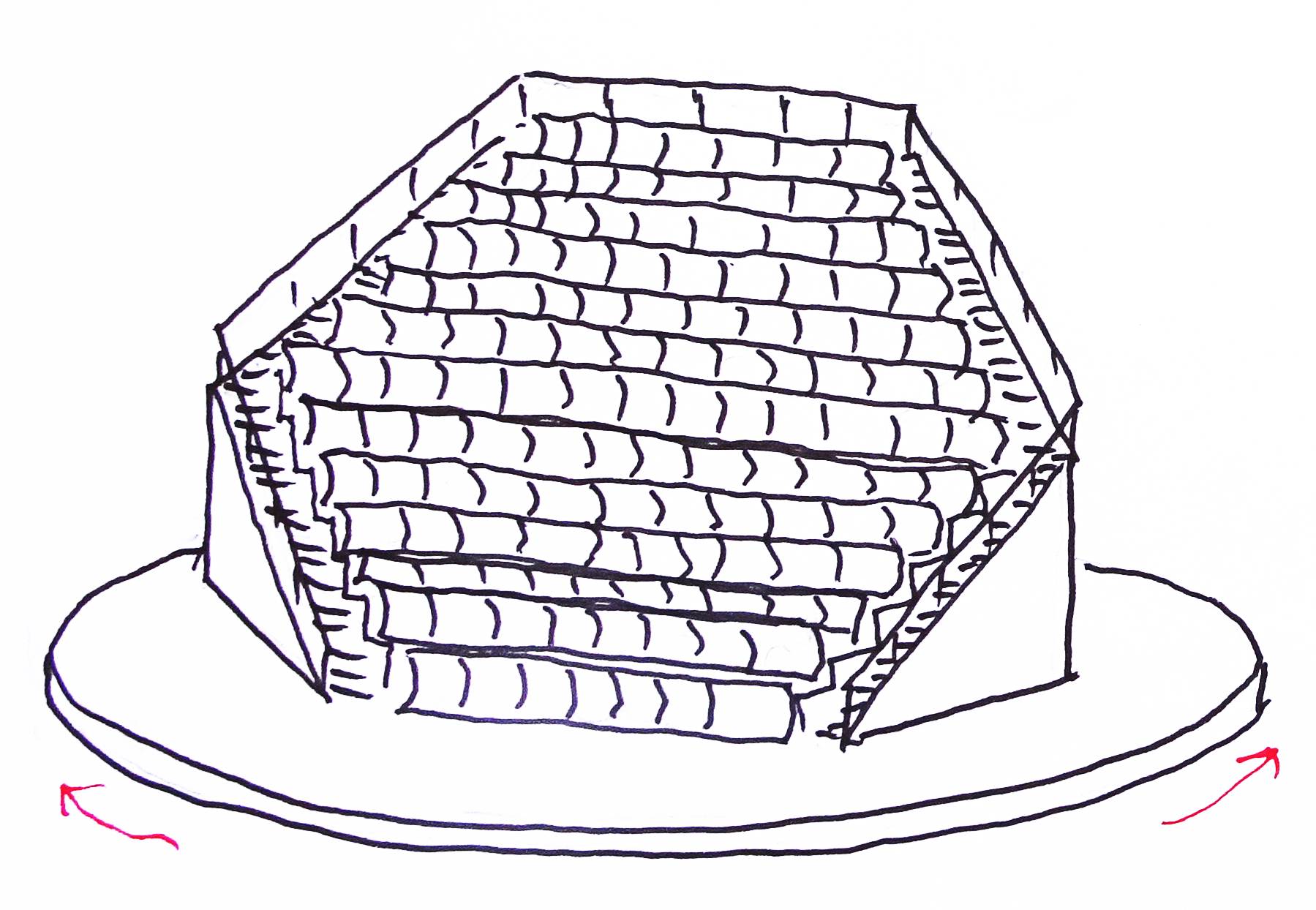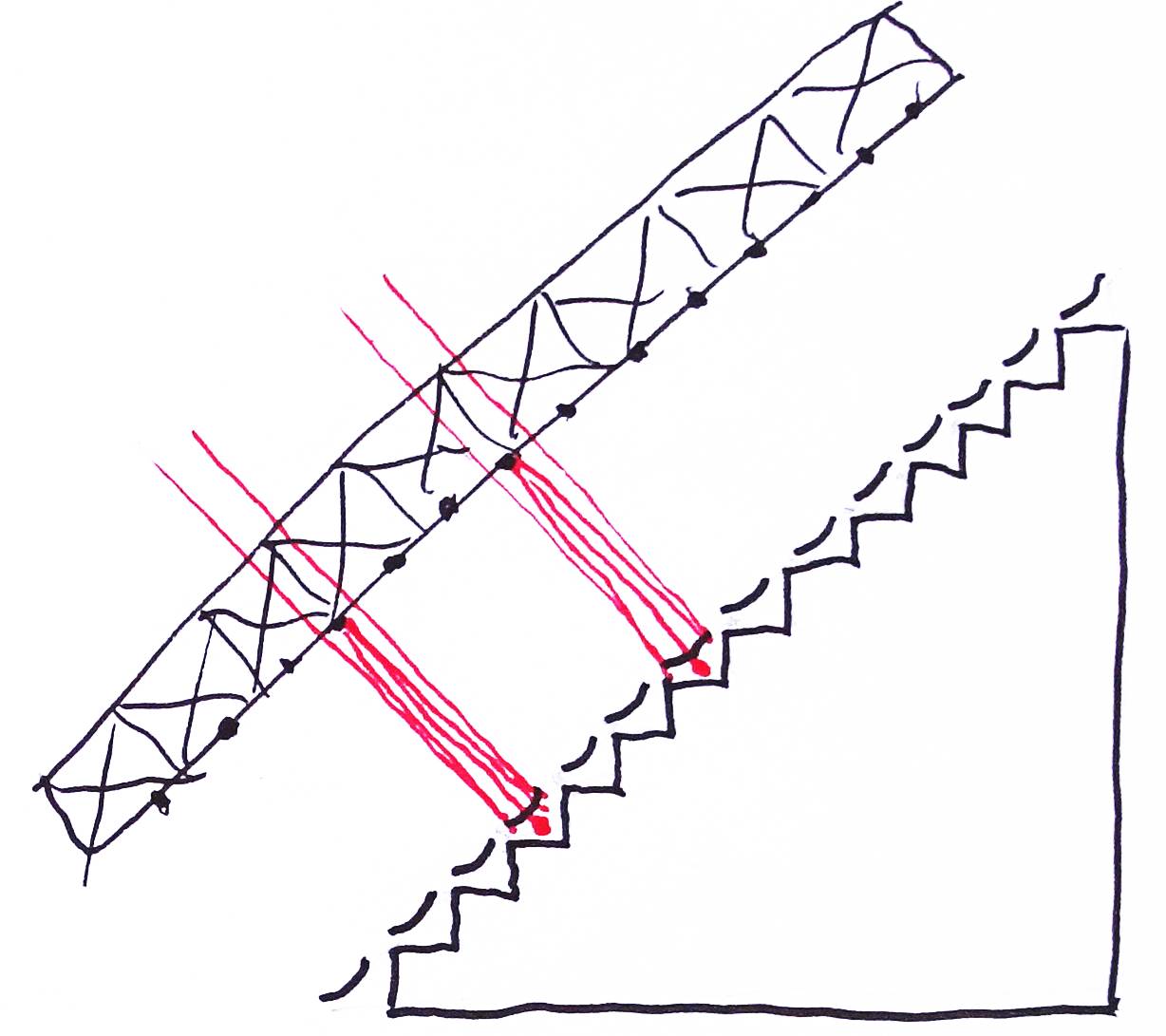

Telescopes use lenses and mirrors to let you look at planets and stars and galaxies bigger. The bigger the aperture (opening where light comes in), the brighter the image. Light from stars and planets is coming straight in, so you need a primary lens or mirror as big as the aperture, after that it's fancy little things. The easiest is to make a primary mirror with a spherical curvature. If the little things are at a long distance from the primary, spherical and parabolic and elliptical curvatures are pretty similar, so the fancy extra stuff doesn't have be quite so fancy to correct the optics.

Dobsonians are the way to make a big scope on earth. They have a rotating base, and a horizontal altitude axis for pointing up or down. This allows really big simple cheap scopes. Then have computerized motors ("goto mounts") that turn both the base and the altitude at the right speeds to compensate for the earth's rotation, and another to rotate the camera, so that they cancel the earth's rotation and the camera stays pointed at the same stars and turned the fixed amount.
For photography, you can get more aperture by making a bigger telescope, or by having multiple telescopes and adding together the pixels from images from each telescope pointed at the same thing. The idea here is to purposely build an optical telescope array with lots of telescopes all pointed at the same thing.
If you have a hundred independent scopes, each needs a primary mirror, has to hold the little fiddly stuff at a large fixed distance from the primary mirror, and has to be kept far enough from the other scopes so it doesn't hit them and they don't block its view.
But if you know you're making an array out of a hundred scopes, they don't need to be independent.

Instead of giving each an rotating base, you can have one big rotating floor and put them all on it. That leave the altitude adjustment, which is in the same direction for all of them. Neighbors left and right won't get run into, so you can put them right next to each other. In fact, you could cut a square primary mirror with spherical curvature for each, and attach the mirrors in a row with no space in between. Further, since the floor rotates, altitude only has to vary 90 degrees. Instead of having a flat floor, have the floor tilted 45 degrees. Then the neighbor in front is at least 45 degrees lower.

If each mirror is a square 4 feet on the side, have the rows 4 feet apart. They will gather all light without hitting each other when vertical or horizontal, and miss 30% of the light when their altitude is 45 degrees. Or better yet, make them hexagons, and have rows offset so the hexagons fit together pointed up or pointed horizontal. A hexagon of 7 scopes on each side, where each scope is a hexagon, would be 127 scopes. A hexagon with 10 scopes on a side would be 271 mirrors. It would look sort of like a high school bleacher sitting on a rotating platform. When the scopes point at the horizon, a person could walk between the rows to clean the mirrors.

The degree a refractor can focus without significant coma (er, lack of focus) is dependent on the ratio of the primary mirror size to the distance between the primary and secondary mirrors. This argues for improving the focus by using 3 foot mirrors rather than 4 foot mirrors, and making the distance between the primary and secondary mirrors as long as is practical. This does increase the number of mirrors, so also the number of cameras needed to capture the images. It also argues for hexagonal mirrors instead of square ones, to minimize the max distance from the center of each mirror while still having the mirrors able to tile the plane with no holes. For now I'll stick with 4 foot diameter mirrors.
Instead of having each scope hold its secondary mirrors at an exact fixed distance that swings around as the altitude is adjusted, wire the secondary mirrors for all the scopes together in a rigid framework, and make sure the framework is kept at the right position relative to the mirrors. The secondary scaffolding will always be a grid at a 45 degree angle, but the whole thing would be lifted and moved so the secondary mirrors are exactly where they should be for each primary mirror. You still have to make sure the secondary mirrors rotate appropriately, but the distance between secondaries is fixed, so the scaffolding holding them in place is fixed. The scaffolding can hold the secondary mirrors at whatever distance is most convenient ... I am guessing about 20 feet from the primary mirrors.
This will be about the size of an eight-story-tall cube. Dust and birds and insects will be a problem. I'm not sure if it is better for it to open to the sky or be under a glass roof. A 10x10 array of a scopes, each with a primary reflector four feet across on a 45 degree slope, is 80 by 80 by 80 feet . Plus 20 feet up and/or forward for the secondary mirrors is 100 by 100 by 100 feet. I don't know if a greenhouse or a geodesic dome is easiest, do whatever is easiest. Each hexagonal mirror is about 2*2*pi = 12.5 square feet, there are 271, so about 3400 square feet of aperture, or about 490,000 square inches, which is the same as a 790 inch aperture. Um, that would make this the biggest telescope in the world. You could of course build multiple if you need more light.
Bob Predicts the Future
Space Elevator
Whale Bus
Table of Contents